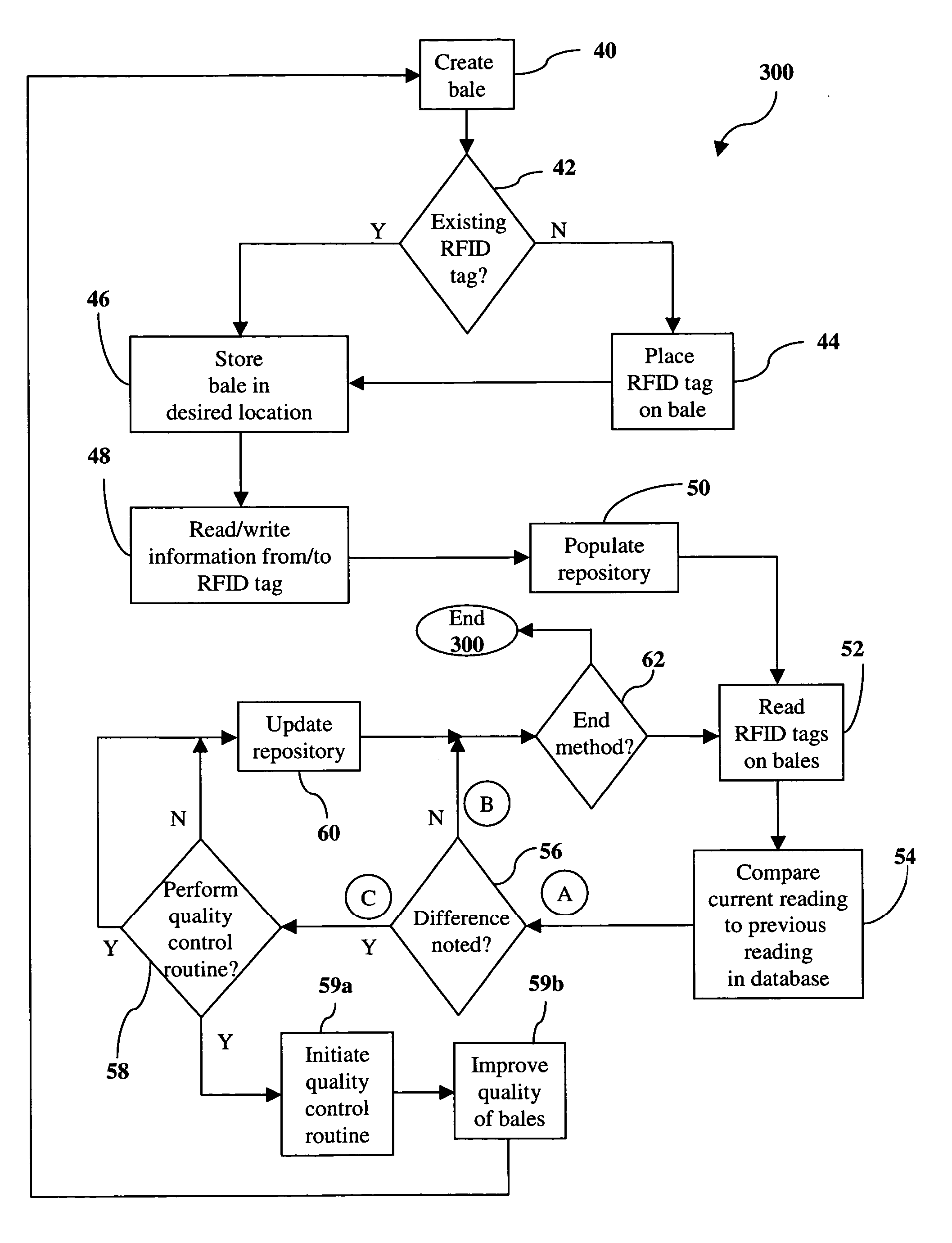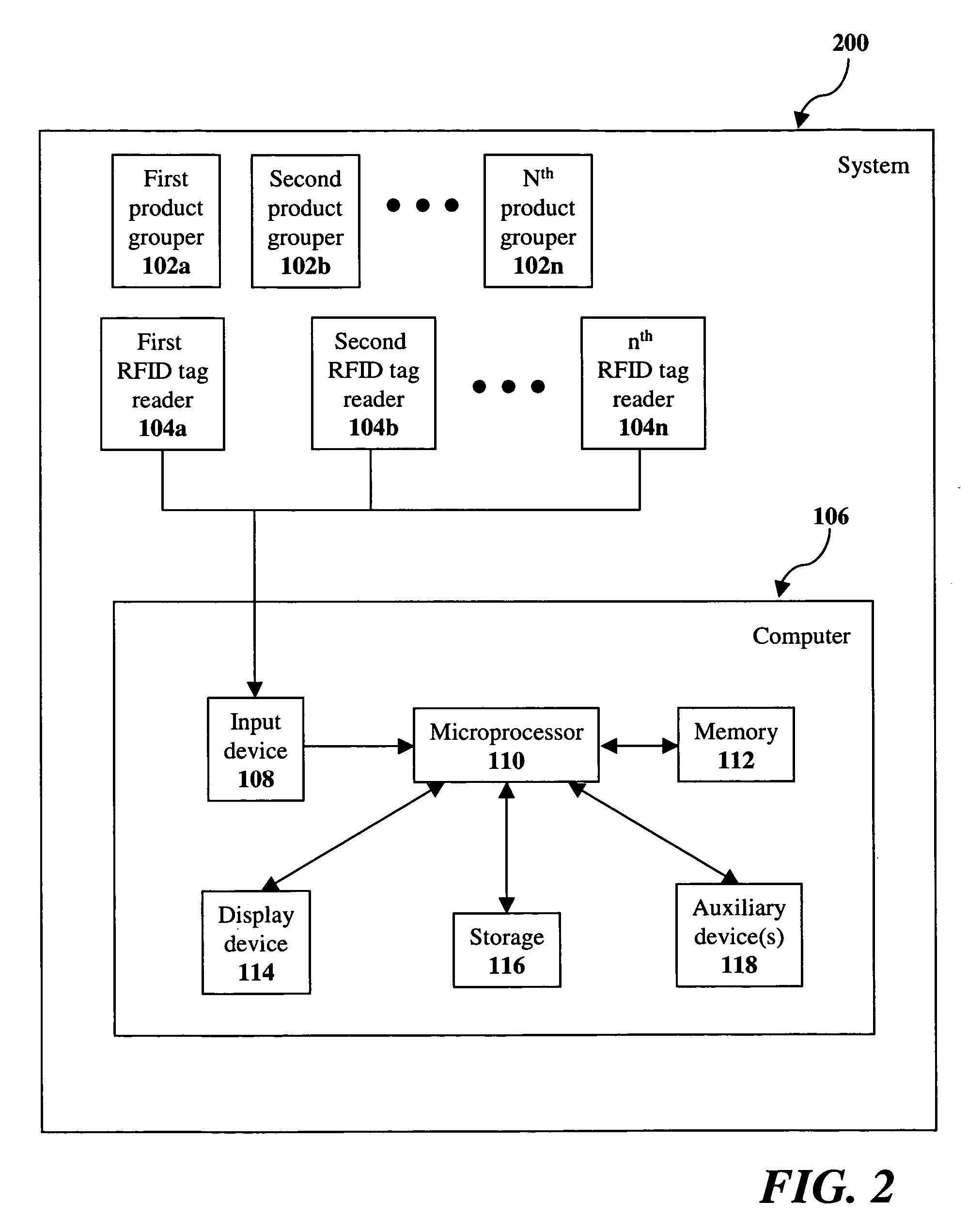Systems and methods for managing inventory of aggregated post-consumer goods
a post-consumer goods and aggregate technology, applied in the field of methods and systems for managing an aggregated material inventory, can solve the problems of large bales that could potentially fall, impact or jar baled materials, serious injury or even death,
- Summary
- Abstract
- Description
- Claims
- Application Information
AI Technical Summary
Benefits of technology
Problems solved by technology
Method used
Image
Examples
Embodiment Construction
[0012] In accordance with one embodiment of the present invention, a method that can be used to facilitate, for example, inventory management of post-consumer goods includes placing at least one radio frequency identifier (RFID) tag on / in a group of products, reading the at least one RFID tag on the group of products, and updating a storage repository containing information pertaining to the bale.
[0013] In accordance with another embodiment of the present invention, a computer program product residing on a computer readable medium may contain instructions for causing a computer to read the at least one RFID tag on a group of products and update a storage repository containing information pertaining to the group of products.
LIST OF FIGURES
[0014] The Detailed Description, including the description of a preferred structure as embodying features of the invention will be best understood when read in reference to the accompanying figures wherein:
[0015]FIG. 1 is a flow chart of a conve...
PUM
 Login to View More
Login to View More Abstract
Description
Claims
Application Information
 Login to View More
Login to View More - R&D
- Intellectual Property
- Life Sciences
- Materials
- Tech Scout
- Unparalleled Data Quality
- Higher Quality Content
- 60% Fewer Hallucinations
Browse by: Latest US Patents, China's latest patents, Technical Efficacy Thesaurus, Application Domain, Technology Topic, Popular Technical Reports.
© 2025 PatSnap. All rights reserved.Legal|Privacy policy|Modern Slavery Act Transparency Statement|Sitemap|About US| Contact US: help@patsnap.com



